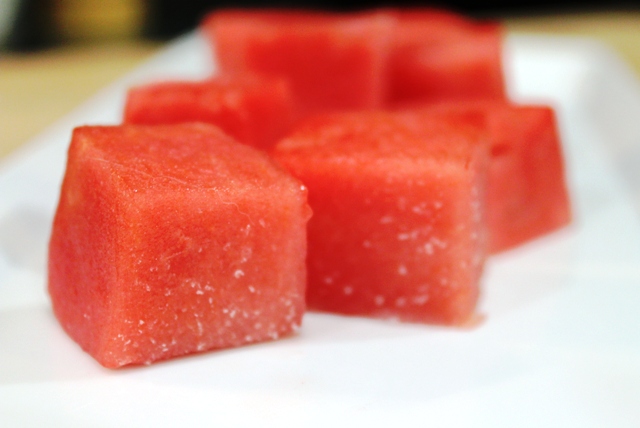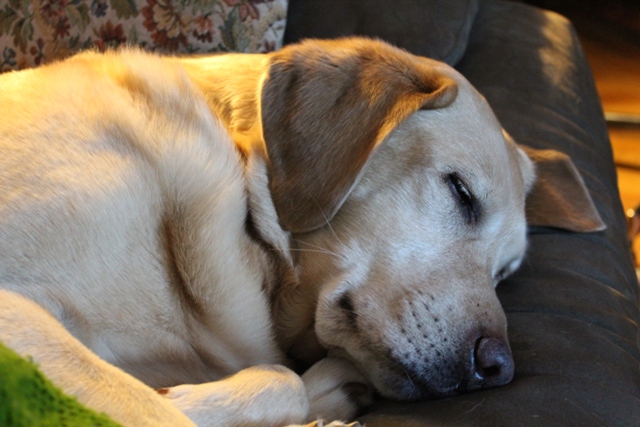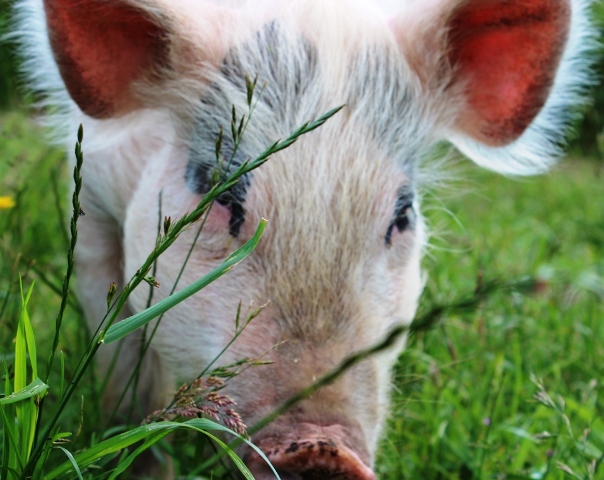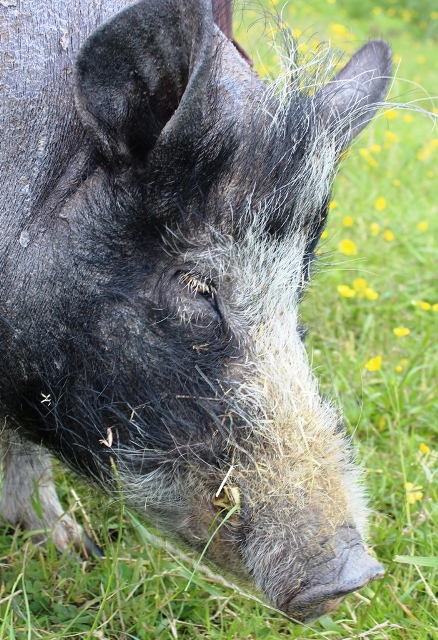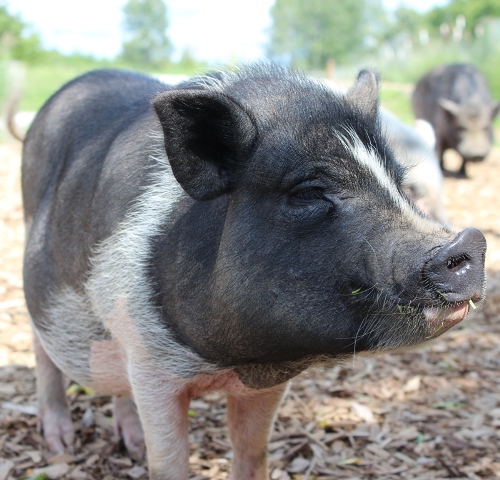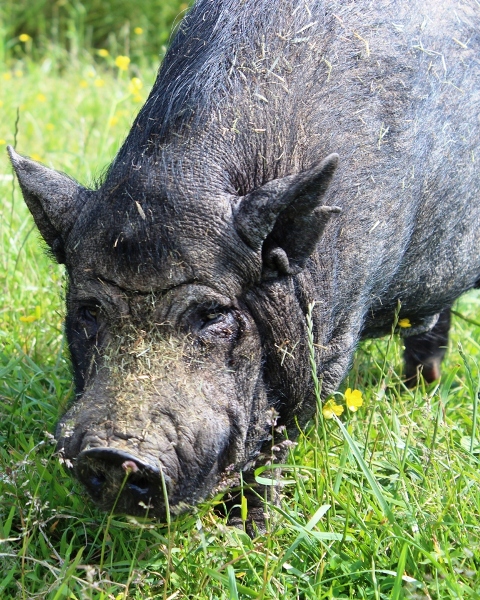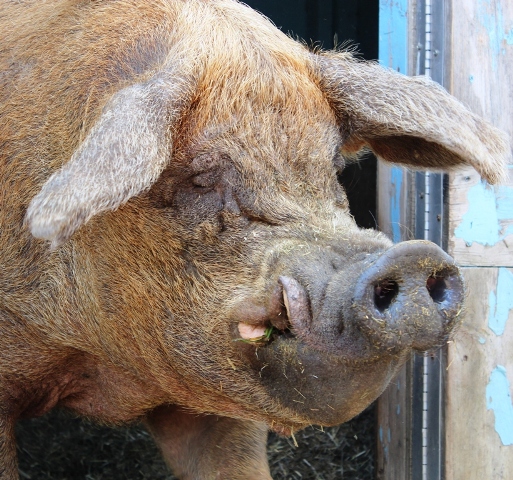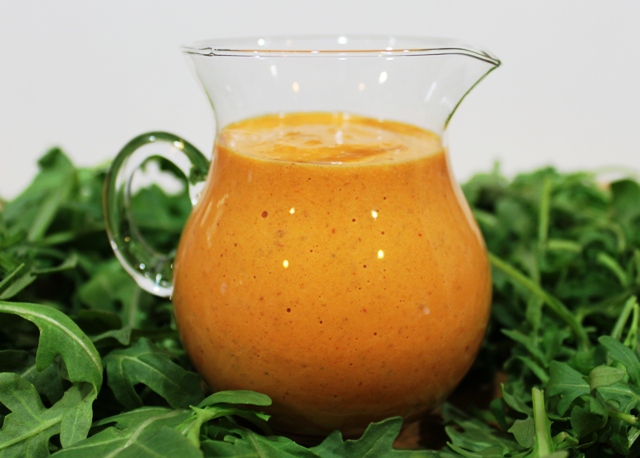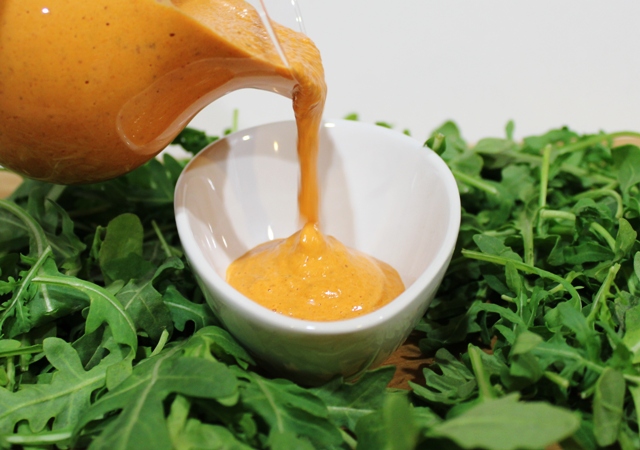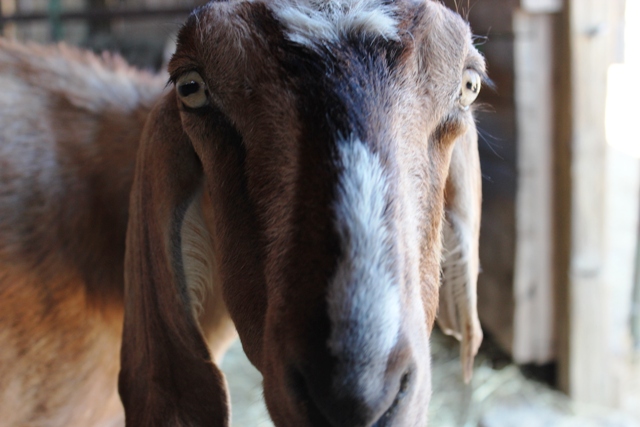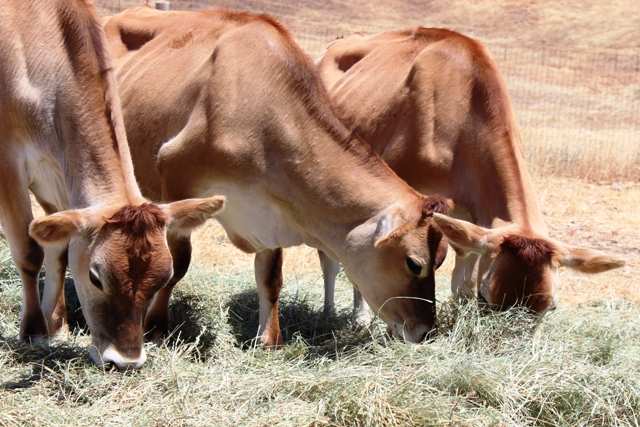Other examples of how we can speak more intentionally about animals are, of course, to use ‘he’ or ‘she,’ ‘they,’ ‘who’ or ‘whom’ instead of ‘it,’ ‘which,’ or ‘that.’ Animals are not inanimate objects and we must shift our language to reflect this truth.
Similarly, using terms like ‘pests’ is problematic as a way to typify certain ‘undesirable’ species, just as derogatory name-calling that uses animal names is a serious issue. Derogatory names we use for humans include, ‘pig,’ ‘heifer,’ ‘cow,’ ‘bitch,’ ‘pussy,’ ‘dirty rat,’ ‘snake,’ ‘vulture,’ etc. Our invocation of species names to indicate negative qualities or offend others is something we can try to be aware of and prevent ourselves from engaging in this kind of discourse.
Calling things what they are, too, is a form of activism for animals. For instance, meat eaters are not simply meat eaters (nor are they ‘carnivores’); they are ‘carnists‘. Carnism indicates that meat eating is a belief system, an ideology, and not simply an acontextual, biological practice. Similarly, the practice of eating meat, wearing animal skins, using animals for entertainment, and using animals in science are all forms of speciesism. This is a serious and overwhelmingly widespread site of discrimination (like racism, sexism, homophobia, etc.) and we must do all we can in our speech and actions to resist being speciesist.
These terms, and many more, are important for how humans think, act, and relate to animals. And yet, one of the most pervasive distinctions and linguistic tragedies we make is our use of the terms, ‘humans’ and ‘animals.’ In the most basic, fundamental way, this distinction is inaccurate because, of course, humans are animals. The false binary between ‘human’ and ‘animal’ is a way of reinforcing the notion that humans are exceptional and removed from the rest of the animal kingdom. Animal studies scholars and animal advocates/activists have long addressed this linguistic problem. More P.C. terms are currently ‘human animals and nonhuman animals,’ calling animals ‘other animals,’ or ‘animals other than humans.’ I often will utilize these when talking about the distinction, but quickly these terms become clunky in everyday speech and in conversational writing (like here on the blog). Furthermore, these terms do not do much to dissolve the duality or binary structure created by putting humans on one side and all the other animals in another category. These mechanisms are still a mechanism of ‘othering.’
Whenever I can, I try to be mindful of talking about specific species rather than broad generalizations, like ‘animals.’ But particularly when you’re talking in a general way about humans’ treatment of other species, it becomes difficult to talk of specific species all the time. This week, I’ve been reading Lisa Kemmerer’s Animals & World Religions (review coming soon for Our Hen House). She talks explicitly about this issue in the book and has adopted a new term. When she is talking about all animals (human and otherwise), she uses the word ‘animal’. But when she is talking about “any animal that does not happen to be the species that I am,” she uses the term ‘anymal’ (pronounced ‘any’ and ‘mal’). While this term will most likely be most commonly used by humans to talk about other species, this term could just as easily be signed by a chimpanzee and understood conceptually (and linguistically) by other species as well.
Thinking about language—how we name things, and how these names determine meaning and action—we have an opportunity, literally every time we speak, to make social change. It is always a work in progress. I catch myself, in speech and in writing, slipping into the habit of regularly using exploitative language.
What are your thoughts on language? What do you think of the term ‘anymal’?
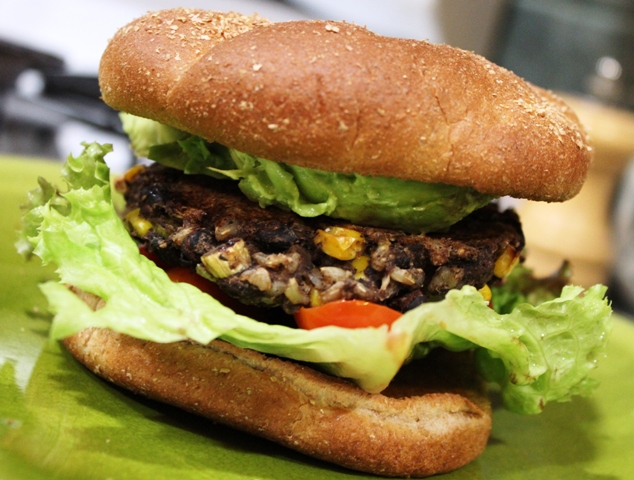

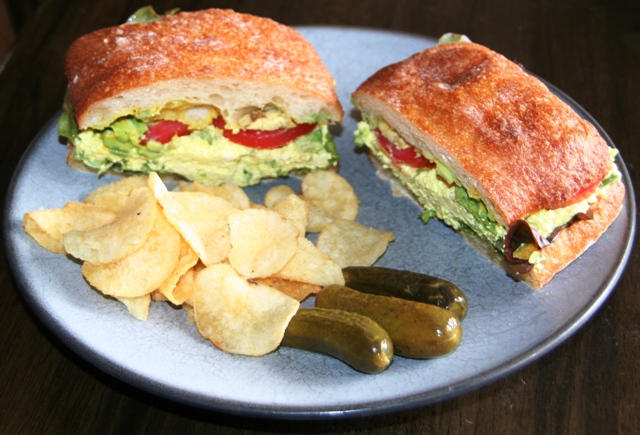

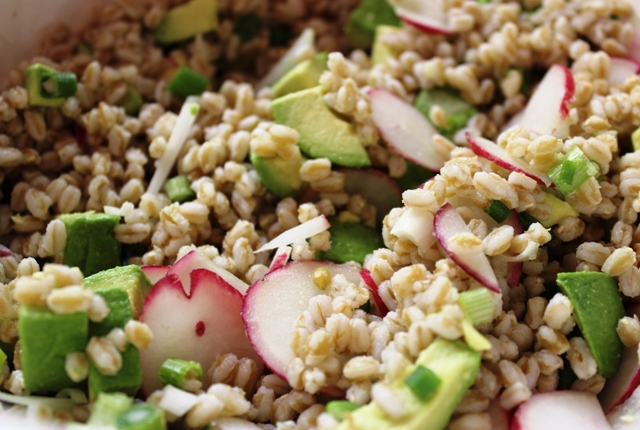

 Follow
Follow





